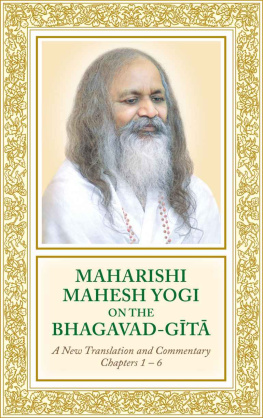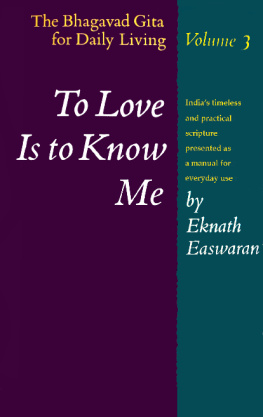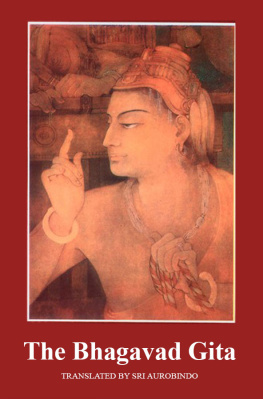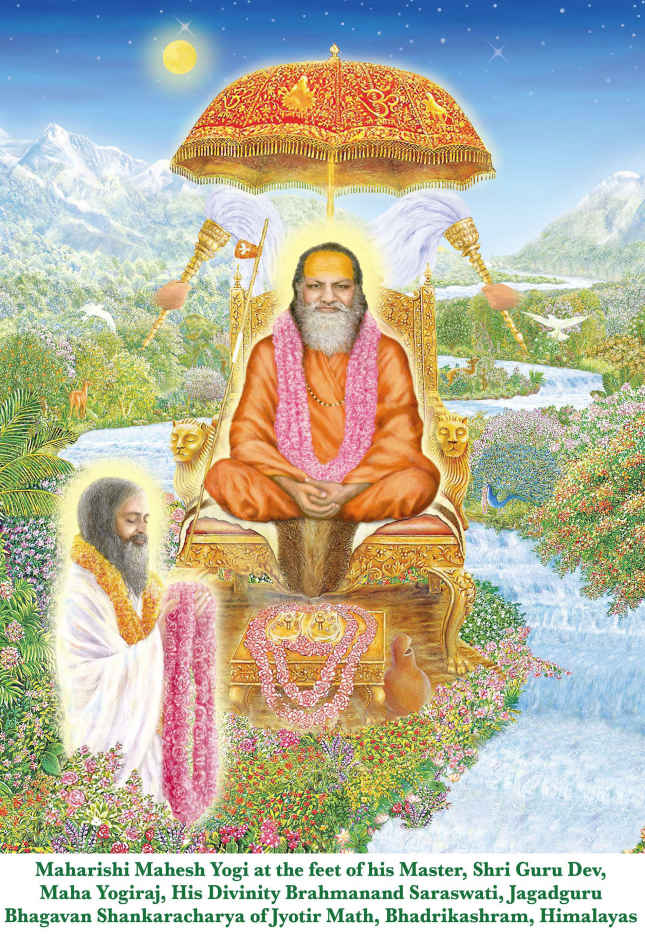Maharishi Mahesh Yogi on the Bhagavad-Gt,
A New Translation and Commentary:
Chapters 16
Published by Penguin Books, 1969
Published by Maharishi International University Press, 1976
Published by Arkana, 1990
Published by Maharishi University of Management Press, 2015
This E-book edition is published by Maharishi Vedic University Press, The Netherlands, 2019 ()
Copyright 2019 Maharishi Vedic University Ltd. and Maharishi Foundation Ltd. All rights reserved worldwide.
Transcendental Meditation, Maharishi, and other terms used in this publication are subject to trademark protection in many countries worldwide, including the United States and the European Union.
No part of this publication may be reproduced, stored in a retrieval system, or transmitted, in any form or by any means, electronic, mechanical, photocopying, recording, or otherwise, without the prior written permission of the publisher. ()
British spelling and style conventions are used in this edition, as in earlier editions of this book. For Sanskrit transliteration, a convention has been adopted based on Maharishis later books, which enables those without formal Sanskrit training to pronounce the Sanskrit words and expressions more accurately.
E-book Edition ISBN 978-0-923569-74-7
For information on learning the Transcendental Meditation technique and about Maharishis programmes, please refer to the addresses on the final pages of this E-book.
His Holiness Maharishi Mahesh Yogi inaugurated the Spiritual Regeneration Movement (SRM) as the first Transcendental Meditation teaching organization in January 1958, in Madras, India. Since that time, the Spiritual Regeneration Movement has evolved into a global structure of Transcendental Meditation centres in countries around the world, which have been established in the name of educational organizations authorized to teach the Transcendental Meditation programme.
Thank you for buying an authorized edition of this E-book and for complying with copyright laws by not reproducing, scanning, or distributing any part of it in any form without written permission.
TO
THE LOTUS FEET OF SHRI GURU DEV,
HIS DIVINITY
BRAHMANANDA SARASWATI,
JAGADGURU, BHAGWAN SHANKARACHARYA
OF JYOTIR MATH, HIMALAYAS;
AND
AS BLESSINGS FROM HIM
TO THE LOVERS OF LIFE
DESIROUS OF ENJOYING ALL GLORIES,
WORLDLY AND DIVINE
Please Read First
Typeface
Due to the variety of tablets/software to read ebooks now available on the market, some devices may have difficulty displaying the Sanskrit or special characters transliterated from the Sanskrit.
If the following verse in red matches the verse in the box below it, then your device/software shows the embedded Sanskrit properly. If it does not, then you may need to use another device/software.
vC
wLw
w vp ww

If the following words in red match those in the box, the typeface is compatible with your device/software. If not, please select another font (Arial, TimesNewRoman, Courier, etc.). If no fonts allow proper display, please try another software/device.
tm, Kisha , shwara, Mms, Pram ada, k

The special characters used in this book are pronounced as follows:
: long a as in father
: long i as in see
: long u as in you
: common n, but pronounced with tongue curved slightly backwards
: ri as in river
: nasal m
: h followed by a slight echo of the preceding vowel
We want to ensure the best quality e-book reading experience possible. We value feedback regarding our books. Please contact us at
Preface
The Vedas are the lighthouse of eternal wisdom leading man to salvation and inspiring him to supreme accomplishment.
The omnipresence of eternal Being, unmanifested and absolute; Its status as That, even in the manifested diversity of creation; and the possibility of the realization of Being by any man in terms of himself these are the great truths of the perennial philosophy of the Vedas.
The Vedas reveal the unchanging Unity of life which underlies the evident multiplicity of creation, for Reality is both manifest and unmanifest, and That alone is. I am That, thou art That, and all this is That, is the Truth; and this is the kernel of the Vedic teaching, which the ishis extol as teaching worthy of hearing, contemplating, and realizing.
The truth of Vedic Wisdom is by its very nature independent of time and can therefore never be lost. When, however, mans vision becomes one-sided and he is caught by the binding influence of the phenomenal world to the exclusion of the absolute phase of Reality, when he is thus confined within the ever-changing phases of existence, his life loses stability and he begins to suffer. When suffering grows, the invincible force of Nature moves to set mans vision right and establish a way of life which will again fulfil the high purpose of his existence. The long history of the world records many such periods in which the ideal pattern of life is forgotten and then restored to man.
Veda Vysa, the sage of enlightened vision, records the growth of unrighteousness in the families of those who ruled the people about five thousand years ago. It was then that Lord Kisha came to remind man of the true values of life and living. He restored that direct contact with the transcendental Being which alone can give fullness to every aspect of life. He brought to light absolute Being as the basic Reality of life and established It as the foundation of all thinking, which in turn is the basis of all doing. This philosophy of Being, thinking, and doing is the true philosophy of the integrated life. It not only helps the doer to gain success in his undertaking, but, at the same time, sets him free from the bondage of action, bringing fulfilment at every level. Such is the teaching of eternal Truth, given by Lord Kisha to Arjuna in the Bhagavad-Gt.
Gradually this teaching came to be forgotten, so that two thousand years later even the principle of Being as the absolute Reality, the source and basis of all creation, was overshadowed by misguided beliefs which glorified only the relative aspects of life. The long lapse of time, says Lord Kisha, is the reason for such a loss of wisdom.
When the philosophy of the integrated life restored by Lord Kisha was lost from view, the idea grew that everything which life can offer is present on the obvious levels of existence, and that therefore it would be useless to aspire to anything that might lie deeper than external appearances. Society became dominated by this superficial outlook, insight into Reality was lost, the right sense of values forgotten, and the stability of life destroyed. Tension, confusion, superstition, unhappiness, and fear prevailed.













